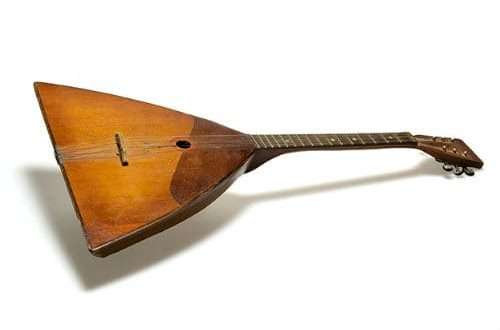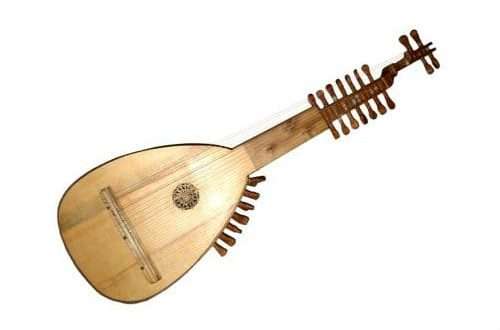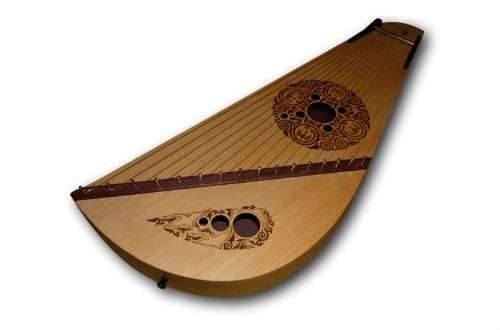
Cello – Musical Instrument
Contents
The cello is a bowed string instrument, an obligatory member of a symphony orchestra and a string ensemble, which has a rich performance technique. Due to its rich and melodious sound, it is often used as a solo instrument. The cello is widely used when it is necessary to express sadness, despair or deep lyrics in music, and in this it has no equal.
Cello (Italian: violoncello, abbr. cello; German: Violoncello; French: violoncelle; English: cello) is a bowed stringed musical instrument of the bass and tenor register, known from the first half of the 16th century, of the same structure as the violin or viola, however considerably larger sizes. The cello has wide expressive possibilities and carefully developed performance technique, it is used as a solo, ensemble and orchestral instrument.
Unlike the violin and viola, to which it looks very similar, the cello is not held in the hands, but placed vertically. Interestingly, at one time it was played standing up, placed on a special chair, only then they came up with a spire that rests on the floor, thereby supporting the instrument.
It is surprising that before the work of L.V. Beethoven, composers did not attach much importance to the melodiousness of this instrument. However, having received recognition in his works, the cello took an important place in the work of romantics and other composers.
Read the history of the cello and many interesting facts about this musical instrument on our page.
Cello sound
Having a thick, rich, melodious, soulful sound, the cello often resembles the timbre of a human voice. Sometimes it seems during solo performances that she is talking and in a sing-song conversation with you. About a person, we would say that he has a chest voice, that is, coming from the depths of the chest, and maybe from the very soul. It is this mesmerizing deep sound that surprises the cello.
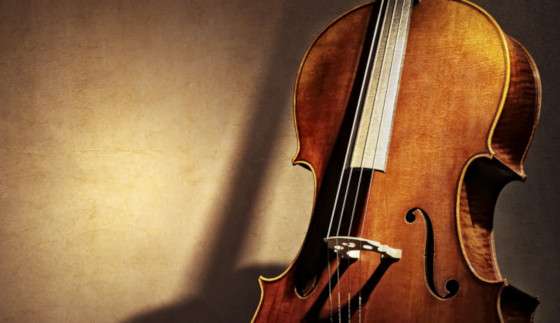
Her presence is necessary when it is necessary to emphasize the tragedy or lyricism of the moment. Each of the four strings of the cello has its own special sound, peculiar only to it. So, low sounds resemble a bass male voice, the upper ones are more gentle and warm female alto. That is why it sometimes seems that she does not just sound, but “talks” with the audience.
The range of sounding covers the interval of five octaves from the note “do” of the big octave to the note “mi” of the third octave. However, often the skill of the performer allows you to take notes much higher. The strings are tuned in fifths.
Cello technique
Virtuoso cellists use the following basic playing techniques:
- harmonic (extracting an overtone sound by pressing the string with the little finger);
- pizzicato (extracting sound without the help of a bow, by plucking the string with your fingers);
- trill (beating the main note);
- legato (smooth, coherent sound of several notes);
- thumb bet (makes it easier to play in upper case).
The playing order suggests the following: the musician sits, placing the structure between the legs, tilting the body slightly towards the body. The body rests on a capstan, making it easier for the performer to hold the instrument in the correct position.
Cellists rub their bow with a special kind of rosin before playing. Such actions improve the adhesion of the hair of the bow and strings. At the end of playing music, the rosin is carefully removed in order to avoid premature damage to the instrument.
Cello Photo :

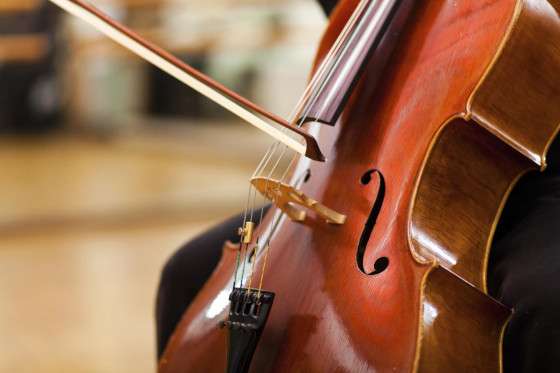
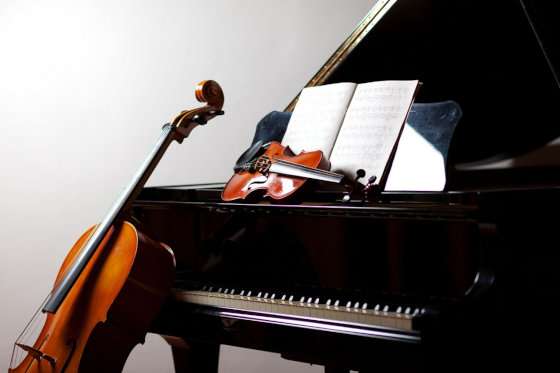
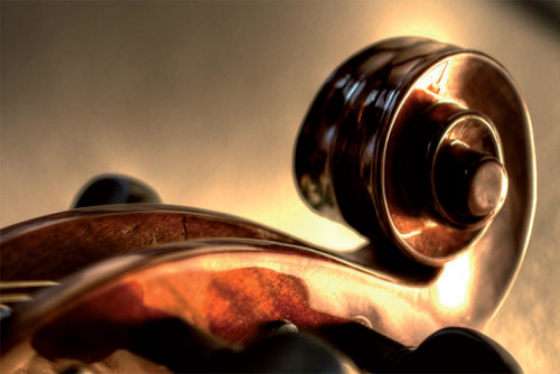
Interesting Cello Facts
- The most expensive instrument in the world is the Duport Stradivari cello. It was made by the great master Antonio Stradivari in 1711. Duport, a brilliant cellist, owned it for many years until his death, which is why the cello got its name. She’s a little scratched. There is a version that this is a trace of Napoleon’s spurs. The emperor left this mark when he tried to learn how to play this musical instrument and wrapped his legs around it. The cello stayed for several years with the famous collector Baron Johann Knop. M. Rostropovich played on it for 33 years. It is rumored that after his death, the Japan Music Association bought the instrument from his relatives for $20 million, although they vehemently deny this fact. Perhaps the instrument is still in the musician’s family.
- Count Villegorsky owned two fine Stradivarius cellos. One of them was later owned by K.Yu. Davydov, then Jacqueline du Pré, now it is played by the famous cellist and composer Yo-Yo Ma.
- Once in Paris, an original competition was arranged. The great cellist Casals took part in it. The sound of ancient instruments made by the masters Guarneri and Stradivari was studied, as well as the sound of modern cellos made at the factory. A total of 12 instruments took part in the experiment. The light was turned off for the purity of the experiment. What was the surprise of the jury and Casals himself when, after listening to the sound, the judges gave 2 times more points to modern models for the beauty of sound than to the old ones. Then Casals said: “I prefer to play old instruments. Let them lose in the beauty of sound, but they have a soul, and the current ones have beauty without a soul.
- The cellist Pablo Casals loved and spoiled his instruments. In the bow of one of the cellos, he inserted a sapphire, which was presented to him by the Queen of Spain.

- The Finnish band Apocalyptika has gained great popularity. Her repertoire includes hard rock. What is surprising is that the musicians play 4 cellos and drums. This use of this bowed instrument, always considered soulful, soft, soulful, lyrical, brought the group worldwide fame. In the name of the group, the performers combined 2 words Apocalypse and Metallica.
- The famous abstract artist Julia Borden paints her amazing paintings not on canvas or paper, but on violins and cellos. To do this, she removes the strings, cleans the surface, primes it and then paints the drawing. Why she chose such an unusual placement for the paintings, Julia cannot even explain to herself. She said that these instruments seem to pull her towards them, inspiring her to complete the next masterpiece.
- The musician Roldugin bought a Stuart cello, made by the master Stradivarius in 1732, for $12 million. Its first owner was King Frederick the Great of Prussia.
- The cost of Antonio Stradivari instruments is the highest. In total, the master made 80 cellos. To date, according to experts, 60 tools have been preserved.
- The Berlin Philharmonic Orchestra has 12 cellists. They became famous for introducing many arrangements of popular contemporary songs into their repertoire.
- The classic look of the instrument is made of wood. However, some modern masters have decided to break the stereotypes. For example, Louis and Clark have been making carbon fiber cellos, and Alcoa has been making aluminum cellos since the 1930s. The German master Pfretzschner was also carried away by the same.

- The ensemble of cellists from St. Petersburg under the direction of Olga Rudneva has a rather rare composition. The ensemble includes 8 cellos and a piano.
- In December 2014, South African Karel Henn set the record for the longest cello playing. He played continuously for 26 hours and got into the Guinness Book of Records.
- Mstislav Rostropovich, a cello virtuoso of the 20th century, made a significant contribution to the development and promotion of the cello repertoire. He performed for the first time more than a hundred new works for cello.
- One of the most famous cellos is the “King” which was made by Andre Amati between 1538 and 1560. This is one of the oldest cellos and is in the South Dakota National Music Museum.
- 4 strings on the instrument were not always used, in the 17th and 18th centuries there were five-stringed cellos in Germany and the Netherlands.
- Initially, the strings were made from sheep offal, later they were replaced by metal ones.
Popular works for cello
J. S. Bach – Suite No. 1 in G major (listen)
P.I. Tchaikovsky. — Variations on a Rococo theme for cello and orchestra (listen)
A. Dvorak – Concerto for cello and orchestra (listen)
C. Saint-Saens – “Swan” (listen)
I. Brahms – Double concerto for violin and cello (listen)
Cello repertoire
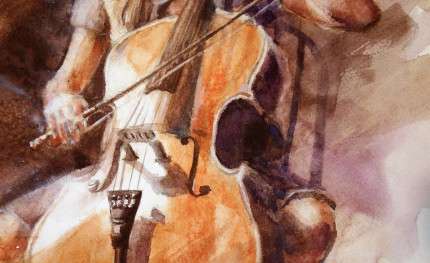
The cello has a very rich repertoire of concertos, sonatas and other works. Perhaps the most famous of them are the six suites of J.S. Bach for Cello Solo, Variations on a Rococo Theme by P.I. Tchaikovsky and The Swan by Saint-Saens. Antonio Vivaldi wrote 25 cello concertos, Boccherini 12, Haydn wrote at least three, Saint-Saens and Dvorak wrote two each. The cello concertos also include pieces written by Elgar and Bloch. The most famous cello and piano sonatas were written by Beethoven, Mendelssohn , Brahms, Rachmaninov , Shostakovich, Prokofiev , Poulenc and Britten .
Cello construction

The tool retains its original appearance for a long time. Its design is quite simple and it never occurred to anyone to remake and change something in it. The exception is the spire, with which the cello rests on the floor. At first it didn’t exist at all. The instrument was placed on the floor and played, clasping the body with the legs, then placed on a dais and played while standing. After the appearance of the spire, the only change was its curvature, which allowed the hull to be at a different angle. The cello looks like a large violin. It consists of 3 main parts:
- Frame. Contains top and bottom soundboard, efu (resonation hole), neckboard, shell, loop, button, shackle (spacer inside).
- Vulture. There is a nut, neck and heel.
- Head. This is a detail with a peg box where the tuning pegs are located. It ends with a curl.
An important separate part of the instrument is the bow. It comes in different sizes and also consists of 3 parts:

- Wooden cane (Brazilian wood or fernambuco is used).
- Pads (made from durable ebony, has mother-of-pearl inserts).
- Horse hair (natural or artificial is taken). Its tension is regulated by an octagonal screw located on the cane.
The place where the hair touches the string is called the playing point. The sound is affected by the playing point, the force of pressure on the bow, the speed of its movement. In addition, the sound can be influenced by the tilt of the bow. For example, apply the technique of harmonics, articulation effects, sound softening, piano.
The structure is similar to other strings ( guitar, violin, viola). The main elements are:
- Head. Composition: peg box, pegs, curl. Connects to the neck.
- Vulture. Here, strings are located in special grooves. The number of strings is standard – 4 pieces.
- Frame. Production material – wood, varnished. Components: upper, lower decks, shell (side part), efs (resonator holes in the amount of 2 pieces that adorn the front of the body are called so because they resemble the letter “f” in shape).
- Spire. It is located at the bottom, helps the structure to rest on the floor, provides stability.
- Bow. Responsible for sound production. It happens in different sizes (from 1/8 to 4/4).
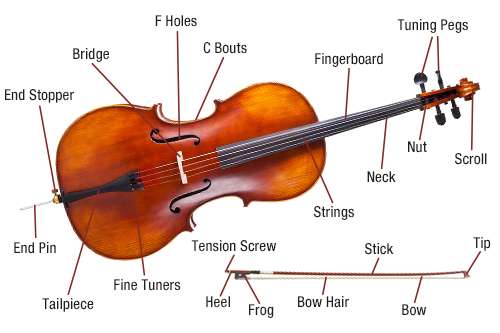
Cello Dimensions

The standard (full) cello size is 4/4. It is these instruments that can be found in symphonic, chamber and string ensembles. However, other tools are also used. For children or short people, smaller models are produced in sizes 7/8, 3/4, 1/2, 1/4, 1/8, 1/10, 1/16.
These variants are similar in structure and sound capabilities to conventional cellos. Their small size makes it convenient for young talents who are just starting their journey into a great musical life.
There are cellos, the size of which exceeds the standard. Similar models are designed for people of large stature with long arms. Such a tool is not produced on a production scale, but is made to order.
The weight of the cello is quite small. Despite the fact that it looks massive, it weighs no more than 3-4 kg.
The history of the creation of the cello
Initially, all bowed instruments originated from a musical bow, which differed little from a hunting one. Initially, they spread in China, India, Persia up to Islamic lands. In European territory, representatives of the violin began to spread from the Balkans, where they were brought from Byzantium.
The cello officially begins its history from the beginning of the 16th century. This is what the modern history of the instrument teaches us, although some finds cast doubt on it. For example, on the Iberian Peninsula, already in the 9th century, iconography arose, on which there are bowed instruments. Thus, if you dig deep, the history of the cello begins more than a millennium ago.

The most popular of the bowed instruments was the viola da gamba . It was she who subsequently ousted the cello from the orchestra, being its direct descendant, but with a more beautiful and varied sound. All her known relatives: violin, viola, double bass, also trace their history from the viola. In the 15th century, the division of the viol into various bowed instruments began.
After its appearance as a separate representative of the bowed cello, the cello began to be used as a bass to accompany vocal performances and parts for the violin, flute and other instruments that had a higher register. Later, the cello was often used to perform solo parts. To this day, not a single string quartet and symphony orchestra can do without it, where 8-12 instruments are involved.
Great cello makers
The first famous cello makers are Paolo Magini and Gasparo Salo. They designed the instrument at the end of the 16th – beginning of the 17th century. The first cellos created by these masters only remotely resembled the instrument that we can see now.
The cello acquired its classical form in the hands of such famous masters as Nicolò Amati and Antonio Stradivari. A distinctive feature of their work was the perfect combination of wood and varnish, thanks to which it was possible to give each instrument its own unique sound, its own manner of sounding. There is an opinion that each cello that came out of the workshop of Amati and Stradivari had its own character.
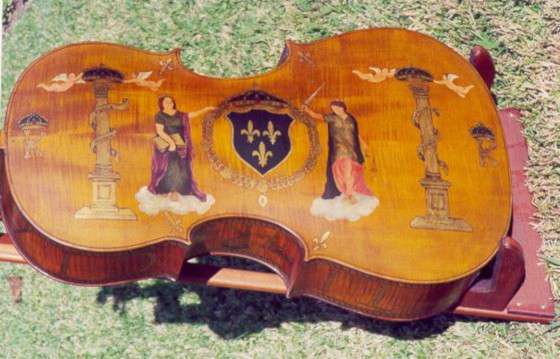
Cellos Stradivari are considered the most expensive to date. Their value is in the millions of dollars. Guarneri cellos are no less famous. It was such an instrument that the famous cellist Casals loved most of all, preferring it to Stradivari products. The cost of these instruments is somewhat lower (from $200,000).
Why are Stradivari instruments valued dozens of times more? In terms of originality of sound, character, timbre, both models have exceptional features. It’s just that the name of Stradivari was represented by no more than three masters, while Guarneri was at least ten. Glory to the house of Amati and Stradivari came during their lifetime, the name Guarneri sounded much later than the death of their representatives.
Notes for cello are written in the range of tenor, bass and treble clef in accordance with the pitch. In the orchestral score, her part is placed between the violas and double basses. Before the start of the Play, the performer rubs the bow with rosin. This is done to bind the hair to the string and allow the sound to be produced. After playing music, the rosin is removed from the instrument, as it spoils the varnish and wood. If this is not done, the sound may subsequently lose quality. Interestingly, each bowed instrument has its own type of rosin.
Cello FAQ
What is the difference between the violin and cello?
The main difference, which is primarily striking is dimensions. The cello in the classic version is almost three times larger and has a fairly large weight. Therefore, in her case there are special devices (spire), and they play only sitting on it.
What is the difference between cello and double bass?
Comparison of double bass and cello:
the cello is less than the double bass; They play the cells sitting, standing at the smuggling; The double bass has the sound lower than the cello; The techniques of playing in the double bass and cello are similar.
What are the types of cello?
Also, like violins, cello are of different sizes (4/4, 3/4, 1/2, 1/4, 1/8) and are selected according to the growth and complexion of the musician.
Cello
1st string – a (la small octave);
2nd string – D (re small octave);
3rd string – G (large octave salt);
4th string – C (to Big Oktava).
Who invented the cello?
Antonio Stradivari
At the moment, it is the cello that is considered the most expensive musical instrument of the world! One of the instruments created by Antonio Stradivari in 1711, according to rumors, was sold to Japanese musicians for 20 million euros!



